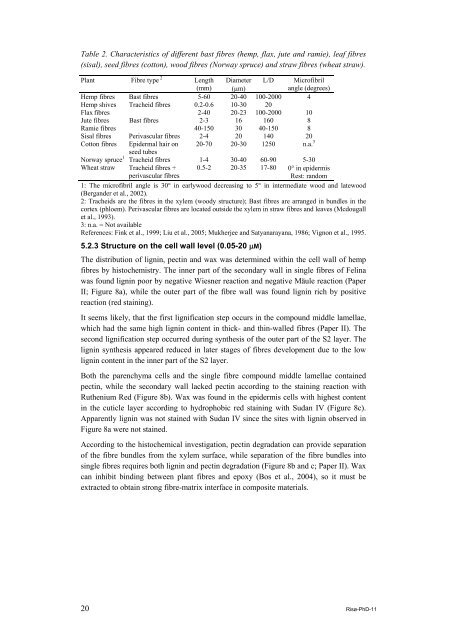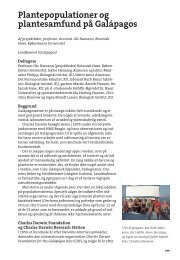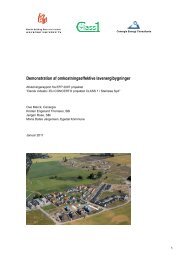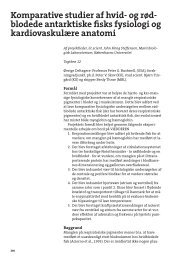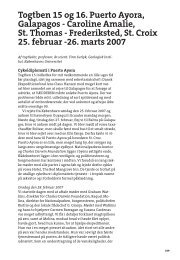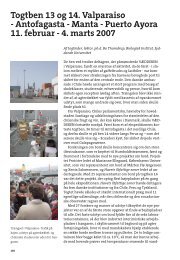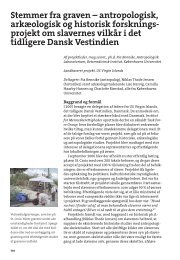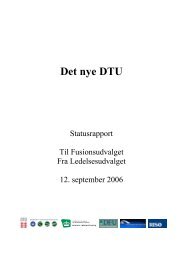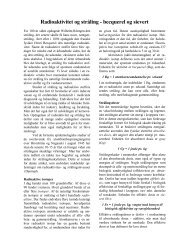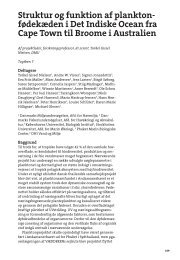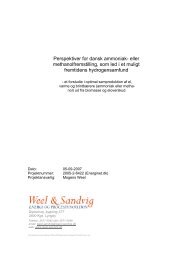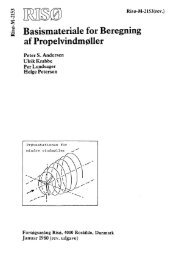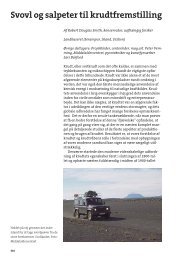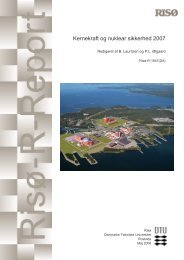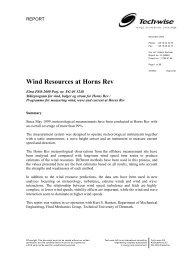Properties of hemp fibre polymer composites -An optimisation of ...
Properties of hemp fibre polymer composites -An optimisation of ...
Properties of hemp fibre polymer composites -An optimisation of ...
Create successful ePaper yourself
Turn your PDF publications into a flip-book with our unique Google optimized e-Paper software.
Table 2. Characteristics <strong>of</strong> different bast <strong>fibre</strong>s (<strong>hemp</strong>, flax, jute and ramie), leaf <strong>fibre</strong>s<br />
(sisal), seed <strong>fibre</strong>s (cotton), wood <strong>fibre</strong>s (Norway spruce) and straw <strong>fibre</strong>s (wheat straw).<br />
Plant Fibre type 2<br />
Length Diameter L/D Micr<strong>of</strong>ibril<br />
(mm) (μm)<br />
angle (degrees)<br />
Hemp <strong>fibre</strong>s Bast <strong>fibre</strong>s 5-60 20-40 100-2000 4<br />
Hemp shives Tracheid <strong>fibre</strong>s 0.2-0.6 10-30 20<br />
Flax <strong>fibre</strong>s<br />
2-40 20-23 100-2000 10<br />
Jute <strong>fibre</strong>s Bast <strong>fibre</strong>s<br />
2-3 16 160 8<br />
Ramie <strong>fibre</strong>s<br />
40-150 30 40-150 8<br />
Sisal <strong>fibre</strong>s Perivascular <strong>fibre</strong>s 2-4 20 140 20<br />
Cotton <strong>fibre</strong>s Epidermal hair on<br />
seed tubes<br />
20-70 20-30 1250 n.a. 3<br />
Norway spruce 1 Tracheid <strong>fibre</strong>s 1-4 30-40 60-90 5-30<br />
Wheat straw Tracheid <strong>fibre</strong>s + 0.5-2 20-35 17-80 0° in epidermis<br />
perivascular <strong>fibre</strong>s<br />
Rest: random<br />
1: The micr<strong>of</strong>ibril angle is 30° in earlywood decreasing to 5° in intermediate wood and latewood<br />
(Bergander et al., 2002).<br />
2: Tracheids are the <strong>fibre</strong>s in the xylem (woody structure); Bast <strong>fibre</strong>s are arranged in bundles in the<br />
cortex (phloem). Perivascular <strong>fibre</strong>s are located outside the xylem in straw <strong>fibre</strong>s and leaves (Mcdougall<br />
et al., 1993).<br />
3: n.a. = Not available<br />
References: Fink et al., 1999; Liu et al., 2005; Mukherjee and Satyanarayana, 1986; Vignon et al., 1995.<br />
5.2.3 Structure on the cell wall level (0.05-20 μM)<br />
The distribution <strong>of</strong> lignin, pectin and wax was determined within the cell wall <strong>of</strong> <strong>hemp</strong><br />
<strong>fibre</strong>s by histochemistry. The inner part <strong>of</strong> the secondary wall in single <strong>fibre</strong>s <strong>of</strong> Felina<br />
was found lignin poor by negative Wiesner reaction and negative Mäule reaction (Paper<br />
II; Figure 8a), while the outer part <strong>of</strong> the <strong>fibre</strong> wall was found lignin rich by positive<br />
reaction (red staining).<br />
It seems likely, that the first lignification step occurs in the compound middle lamellae,<br />
which had the same high lignin content in thick- and thin-walled <strong>fibre</strong>s (Paper II). The<br />
second lignification step occurred during synthesis <strong>of</strong> the outer part <strong>of</strong> the S2 layer. The<br />
lignin synthesis appeared reduced in later stages <strong>of</strong> <strong>fibre</strong>s development due to the low<br />
lignin content in the inner part <strong>of</strong> the S2 layer.<br />
Both the parenchyma cells and the single <strong>fibre</strong> compound middle lamellae contained<br />
pectin, while the secondary wall lacked pectin according to the staining reaction with<br />
Ruthenium Red (Figure 8b). Wax was found in the epidermis cells with highest content<br />
in the cuticle layer according to hydrophobic red staining with Sudan IV (Figure 8c).<br />
Apparently lignin was not stained with Sudan IV since the sites with lignin observed in<br />
Figure 8a were not stained.<br />
According to the histochemical investigation, pectin degradation can provide separation<br />
<strong>of</strong> the <strong>fibre</strong> bundles from the xylem surface, while separation <strong>of</strong> the <strong>fibre</strong> bundles into<br />
single <strong>fibre</strong>s requires both lignin and pectin degradation (Figure 8b and c; Paper II). Wax<br />
can inhibit binding between plant <strong>fibre</strong>s and epoxy (Bos et al., 2004), so it must be<br />
extracted to obtain strong <strong>fibre</strong>-matrix interface in composite materials.<br />
20 Risø-PhD-11


